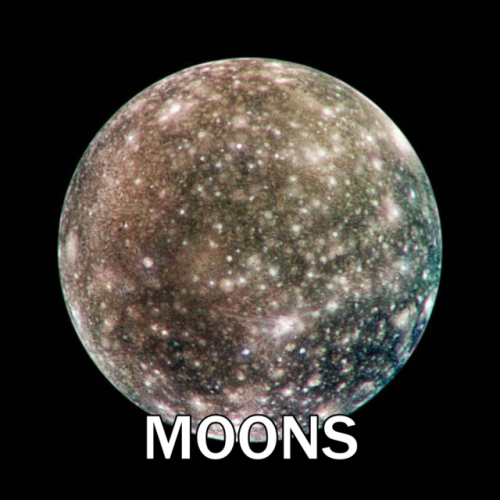Chaos3612 - Chaotic Dynamics








More Posts from Chaos3612 and Others

Voyager’s Jupiter and Io
This is a video of an Oksapmin woman demonstrating the Oksapmin base-27 counting system. The Oksapmin people of New Guinea use body part counting as a base for their numeral system (which may sound wild and exotic, but is really just a more detailed version of what we do, most anthropologists think base-10 number systems come from humans’ having 10 fingers) starting with the thumb, going up the arm and head to the nose (the 14th number) and going down the other side of the body to the pinky finger of the other hand (the 27th number). It does not matter which side you start counting on, so counting from right-to-left or left-to-right makes no difference.
And if that’s not the coolest thing you’ve ever heard, I don’t know what to tell ya


Orbital path of asteroid near miss in 2002. Yah, that’s how close we came to nuclear winter and possible total destruction.
I’m gonna depress the hell out of all of you. ready? ok go
so, that “stop devaluing feminized work post”
nice idea and all
but the thing is, as soon as a decent number of women enter any field, it becomes “feminized,” and it becomes devalued.
as women enter a field in greater number, people become less willing to pay for it, the respect for it drops, and it’s seen as less of a big deal. it’s not about the job- it’s about the number of women in the job.
observe what happened with biology. it’s STEM, sure, but anyone in a male-dominated science will sneer at the idea of it being ‘for real,’ nevermind that everyone sure took it more seriously when it was a male dominated field. so has happened with scores of other areas; nursing comes to mind
so the thing is, it’s not the work or the job that has to be uplifted and seen as more respectable. it will never work out, until people start seeing women as respectable
but there’s a doozy and who the fuck knows if it’s ever happening in my life time

Joi Ito:
“What I realized was that a lot of the engineers who work in AI felt that you could reduce the whole world to a function.
That life, human life, was just optimizing. And that the world could be simulated in a computer.
This is almost religious because I think that there are people who have the kind of thinking where they look at their life as a game.
Where they say: “Okay. I’m optimizing for money, and how many minutes do I have to do this.”
I tweeted out the other day: “Those people who think that we live in a computer simulation are the kinds of people who are most likely to be simulations.”
A lot of people approach life like an engineering problem. For them, I could imagine that they could see their whole life being in a computer.
But if you go into the humanities or the East Coast, there are a lot of people who don’t think like a computer.
They live life through experience and only things that happen actually matter. (…)
A lot of the papers that you see by the engineers say: “We’ll just define fairness as accuracy,” or something like that.
And this is what I call reductionist, because fairness is really complex, and it’s always contextual.
My concern is the stuff that we have, which is efficiency, productivity — that’s the stuff that makes us obese, creates climate change, income inequality.
The problems that we have today are caused by the tools that we created.
But I think there’s a lot of people who believe that more efficiency and productivity will fix everything.
I think right now there’s a lot of power in the hands of the reductionists.
And I would put economists and neoclassic economics in this, which is just reducing everything to just measuring GDP. (…)
If you go to places like MIT, the engineers have all the power, all the money, and everything looks like an engineering problem.
And we’ve made liberal arts sort of this sideshow.
I think that we need the historians, social scientists, anthropologists, qualitative people involved in asking the questions: why are we here, what are we doing?”
Source: Recode Decode — MIT Media Lab director Joi Ito on the problem with tech people who want to solve problems
-
 chuckableimp reblogged this · 2 weeks ago
chuckableimp reblogged this · 2 weeks ago -
 changelilylove reblogged this · 2 weeks ago
changelilylove reblogged this · 2 weeks ago -
 saltbright liked this · 2 weeks ago
saltbright liked this · 2 weeks ago -
 the-fear-institute liked this · 2 weeks ago
the-fear-institute liked this · 2 weeks ago -
 im-tootired-for-this reblogged this · 2 weeks ago
im-tootired-for-this reblogged this · 2 weeks ago -
 dancingclownface reblogged this · 2 weeks ago
dancingclownface reblogged this · 2 weeks ago -
 bogusfemale liked this · 2 weeks ago
bogusfemale liked this · 2 weeks ago -
 bookwormdragonrider liked this · 2 weeks ago
bookwormdragonrider liked this · 2 weeks ago -
 boredtrekkie reblogged this · 2 weeks ago
boredtrekkie reblogged this · 2 weeks ago -
 psychicbouquetofstars liked this · 2 weeks ago
psychicbouquetofstars liked this · 2 weeks ago -
 itshomobirb liked this · 2 weeks ago
itshomobirb liked this · 2 weeks ago -
 biscuit-and-jam reblogged this · 2 weeks ago
biscuit-and-jam reblogged this · 2 weeks ago -
 a-cold-katt liked this · 2 weeks ago
a-cold-katt liked this · 2 weeks ago -
 maandarinee reblogged this · 2 weeks ago
maandarinee reblogged this · 2 weeks ago -
 basic-bamboo reblogged this · 2 weeks ago
basic-bamboo reblogged this · 2 weeks ago -
 iamjessemccartney liked this · 2 weeks ago
iamjessemccartney liked this · 2 weeks ago -
 espressocrowley reblogged this · 2 weeks ago
espressocrowley reblogged this · 2 weeks ago -
 ladybessyboo liked this · 2 weeks ago
ladybessyboo liked this · 2 weeks ago -
 kahtiihma reblogged this · 2 weeks ago
kahtiihma reblogged this · 2 weeks ago -
 kahtiihma liked this · 3 weeks ago
kahtiihma liked this · 3 weeks ago -
 capulets730 reblogged this · 4 weeks ago
capulets730 reblogged this · 4 weeks ago -
 briardragon reblogged this · 1 month ago
briardragon reblogged this · 1 month ago -
 fl3shm3ch reblogged this · 1 month ago
fl3shm3ch reblogged this · 1 month ago -
 passion8alot reblogged this · 1 month ago
passion8alot reblogged this · 1 month ago -
 bluebananagamer69 liked this · 1 month ago
bluebananagamer69 liked this · 1 month ago -
 jswatson reblogged this · 1 month ago
jswatson reblogged this · 1 month ago -
 passion8alot reblogged this · 1 month ago
passion8alot reblogged this · 1 month ago -
 brownshoes reblogged this · 1 month ago
brownshoes reblogged this · 1 month ago -
 brownshoes liked this · 1 month ago
brownshoes liked this · 1 month ago -
 feraltrenchcoat liked this · 1 month ago
feraltrenchcoat liked this · 1 month ago -
 sorbeau liked this · 1 month ago
sorbeau liked this · 1 month ago -
 kitebird-hockey liked this · 1 month ago
kitebird-hockey liked this · 1 month ago -
 ghostofsonofcelluloid liked this · 1 month ago
ghostofsonofcelluloid liked this · 1 month ago -
 pinkie-quinns liked this · 1 month ago
pinkie-quinns liked this · 1 month ago -
 onpyre liked this · 1 month ago
onpyre liked this · 1 month ago -
 crypticmillipede liked this · 1 month ago
crypticmillipede liked this · 1 month ago -
 ravenous-pistachios reblogged this · 1 month ago
ravenous-pistachios reblogged this · 1 month ago -
 bi-hans liked this · 1 month ago
bi-hans liked this · 1 month ago -
 wacky-internet-rollercoaster reblogged this · 1 month ago
wacky-internet-rollercoaster reblogged this · 1 month ago -
 rayna19125141 liked this · 1 month ago
rayna19125141 liked this · 1 month ago -
 mynameisroot reblogged this · 1 month ago
mynameisroot reblogged this · 1 month ago -
 citricacidprince liked this · 1 month ago
citricacidprince liked this · 1 month ago -
 beargeist liked this · 1 month ago
beargeist liked this · 1 month ago -
 turtlebot113 liked this · 1 month ago
turtlebot113 liked this · 1 month ago -
 bitchme-2 liked this · 1 month ago
bitchme-2 liked this · 1 month ago -
 not-truly-other reblogged this · 1 month ago
not-truly-other reblogged this · 1 month ago -
 katofrafters liked this · 1 month ago
katofrafters liked this · 1 month ago -
 aneldritchbeing liked this · 1 month ago
aneldritchbeing liked this · 1 month ago -
 dontforgetthefrenchhorns liked this · 1 month ago
dontforgetthefrenchhorns liked this · 1 month ago -
 ultramarinequeen reblogged this · 1 month ago
ultramarinequeen reblogged this · 1 month ago

Small and angry.PhD student. Mathematics. Slow person. Side blog, follow with @talrg.
213 posts












